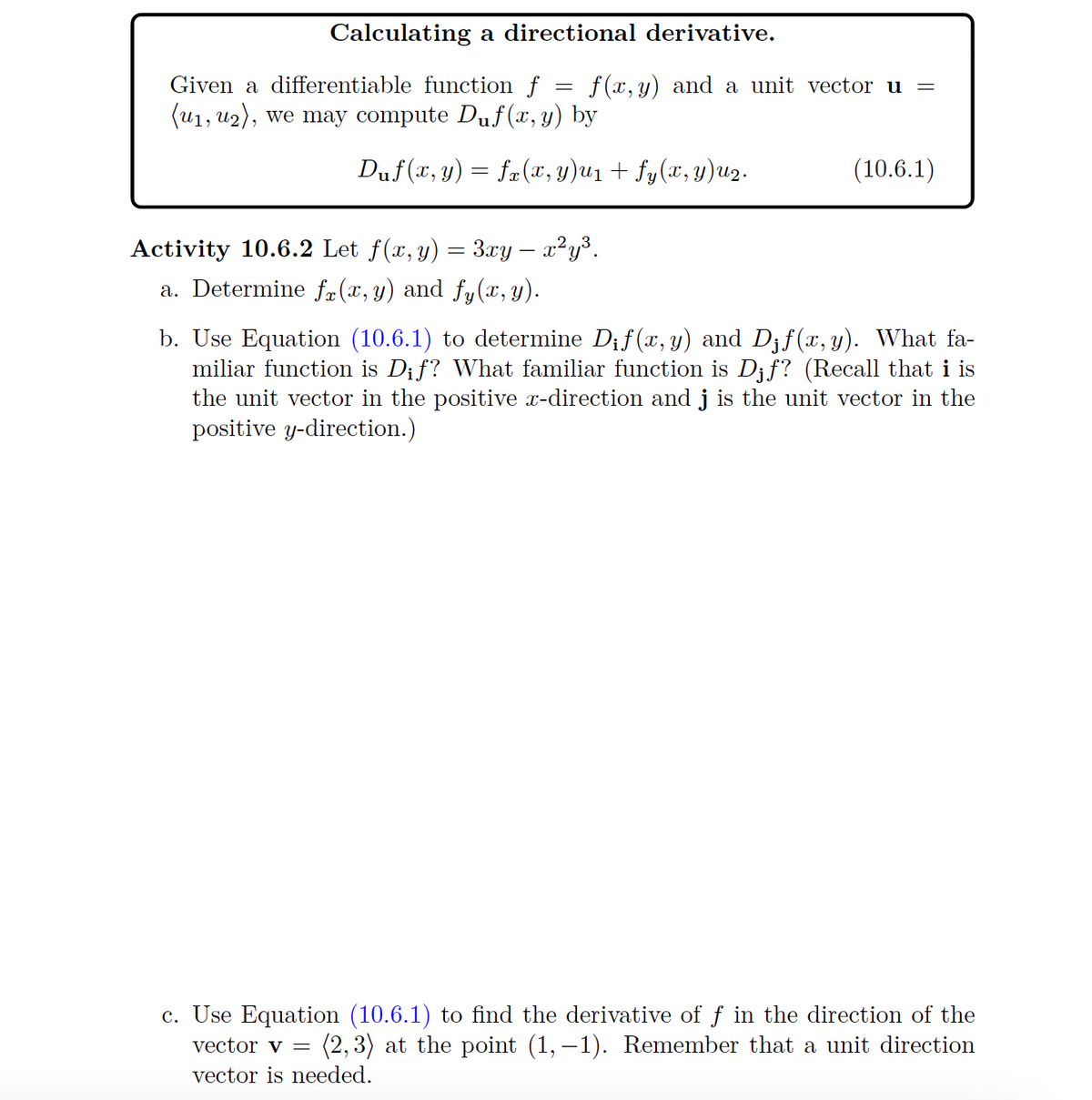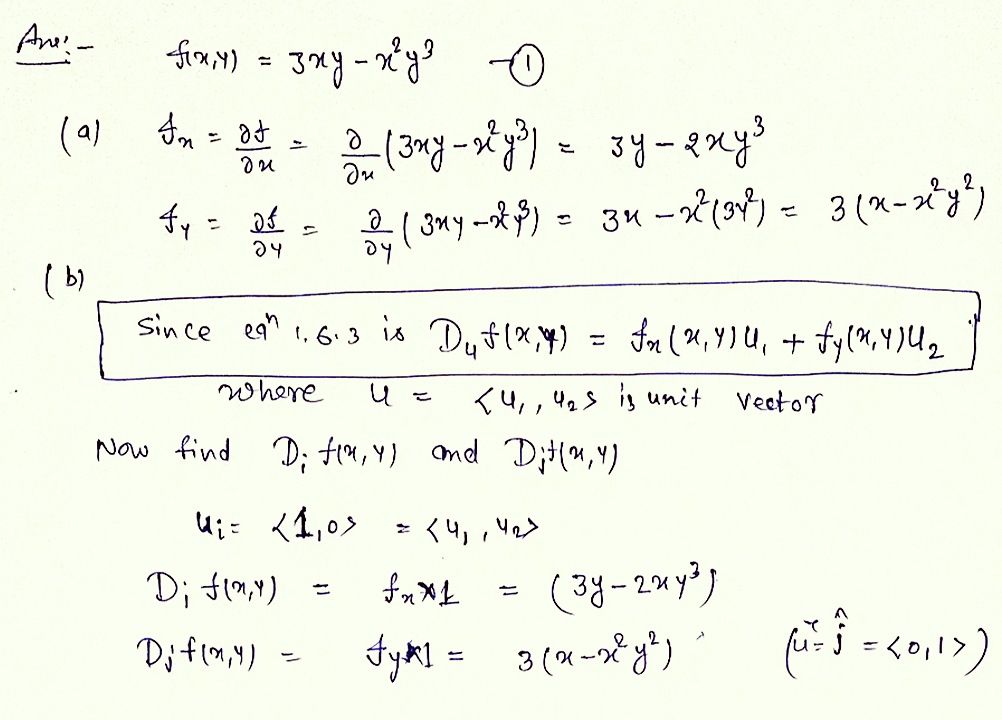Activity 10.6.2 Let f(x, y) = 3xy — x²y³. a. Determine f(x, y) and fy(x, y). b. Use Equation (10.6.1) to determine Dif(x, y) and Dif(x, y). What fa- miliar function is Dif? What familiar function is Djf? (Recall that i is the unit vector in the positive x-direction and j is the unit vector in the positive y-direction.) c. Use Equation (10.6.1) to find the derivative of f in the direction of the vector v = (2,3) at the point (1,-1). Remember that a unit direction vector is needed.
Activity 10.6.2 Let f(x, y) = 3xy — x²y³. a. Determine f(x, y) and fy(x, y). b. Use Equation (10.6.1) to determine Dif(x, y) and Dif(x, y). What fa- miliar function is Dif? What familiar function is Djf? (Recall that i is the unit vector in the positive x-direction and j is the unit vector in the positive y-direction.) c. Use Equation (10.6.1) to find the derivative of f in the direction of the vector v = (2,3) at the point (1,-1). Remember that a unit direction vector is needed.
Algebra & Trigonometry with Analytic Geometry
13th Edition
ISBN:9781133382119
Author:Swokowski
Publisher:Swokowski
Chapter8: Applications Of Trigonometry
Section8.3: Vectors
Problem 60E
Related questions
Question
PLEASE HELP WITH B. IT WOULD BE GREAT IF YOU'RE WILLING TO DO C, BUT DEFINITELY HELP WITH B.

Transcribed Image Text:Calculating a directional derivative.
Given a differentiable function f
(u₁, u2), we may compute Duf(x, y) by
=
f(x, y) and a unit vector u
Duf(x, y) = fx(x, y)u1 + fy(x, y)u2.
Activity 10.6.2 Let f(x, y) = 3xy – x²y³.
a. Determine f(x, y) and fy(x, y).
(10.6.1)
b. Use Equation (10.6.1) to determine Dif(x, y) and D¡f(x, y). What fa-
miliar function is Dif? What familiar function is Djf? (Recall that i is
the unit vector in the positive x-direction and j is the unit vector in the
positive y-direction.)
c. Use Equation (10.6.1) to find the derivative of ƒ in the direction of the
vector v = (2,3) at the point (1,-1). Remember that a unit direction
vector is needed.
Expert Solution
Step 1

Trending now
This is a popular solution!
Step by step
Solved in 2 steps with 2 images

Recommended textbooks for you

Algebra & Trigonometry with Analytic Geometry
Algebra
ISBN:
9781133382119
Author:
Swokowski
Publisher:
Cengage

Algebra & Trigonometry with Analytic Geometry
Algebra
ISBN:
9781133382119
Author:
Swokowski
Publisher:
Cengage